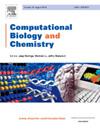基于三角突变的动态综合学习屎壳郎优化器息肉图像分割
IF 2.6
4区 生物学
Q2 BIOLOGY
引用次数: 0
摘要
息肉的早期诊断过程被认为是预防保健的关键点,因为它可以显著改善结直肠癌患者的预后和治疗效果。由于息肉是在结肠中形成的,随着时间的推移,它们可能会癌变。我们提出了一种基于多层阈值技术的息肉图像分割方法,以确保有效的早期息肉诊断。基于三角突变算子(TMO)、综合学习算子(CL)和搜索域动态更新算子,改进了蜣螂优化器(DBO)算法的分割性能。我们使用8张Polyps图像对DCTDBO的性能进行了全面的评估,并将其与其他图像分割方法进行了比较,确保了严格和彻底的过程。结果表明,根据性能指标,DCTDBO对息肉图像的分割能力较高。在峰值信噪比(PSNR)、结构相似度(SSIM)和特征相似度(FSIM)方面,DCTDBO表现优于DBO基本版和其他方法。例如,DCTDBO总体阈值水平与测试图像在FSIM、SSIM和PSNR方面的平均值分别为0.9668、0.99217和28.9338。这说明了TMO和CL对DBO性能提高的影响。本文章由计算机程序翻译,如有差异,请以英文原文为准。
Dynamic comprehensive learning-based dung beetle optimizer using triangular mutation for polyps image segmentation
The process of early diagnosis of polyps is considered a critical point of preventive healthcare, as it can significantly improve the prognosis and treatment outcomes of patients with colorectal cancer. Since the Polyps are constructed in the colon, they can grow up to be cancerous over time. We present an alternative Polyps image segmentation approach according to multilevel thresholding techniques (MLTs) to ensure effective early polyp diagnosis. The developed MLT Polyps image segmentation method depends on improving the performance of the Dung beetle optimizer (DBO) algorithm based on the operators of Triangular Mutation (TMO), Comprehensive learning (CL), and dynamic update of the search domain. We conducted a comprehensive evaluation of the performance of the DCTDBO using eight Polyps images and compared it with other image segmentation methods, ensuring a rigorous and thorough process. The results show the high ability of the DCTDBO according to performance measures to segment the Polyps images. In terms of peak signal-to-noise ratio (PSNR), structural similarity index (SSIM), and feature similarity (FSIM), DCTDBO performed better than the basic version of the DBO and other methods. For example, the average of DCTDBO overall threshold levels and tested images in terms of FSIM, SSIM, and PSNR is 0.9668, 0.99217, and 28.9338, respectively. This indicates the influence of TMO and CL on enhancing the performance of DBO.
求助全文
通过发布文献求助,成功后即可免费获取论文全文。
去求助
来源期刊

Computational Biology and Chemistry
生物-计算机:跨学科应用
CiteScore
6.10
自引率
3.20%
发文量
142
审稿时长
24 days
期刊介绍:
Computational Biology and Chemistry publishes original research papers and review articles in all areas of computational life sciences. High quality research contributions with a major computational component in the areas of nucleic acid and protein sequence research, molecular evolution, molecular genetics (functional genomics and proteomics), theory and practice of either biology-specific or chemical-biology-specific modeling, and structural biology of nucleic acids and proteins are particularly welcome. Exceptionally high quality research work in bioinformatics, systems biology, ecology, computational pharmacology, metabolism, biomedical engineering, epidemiology, and statistical genetics will also be considered.
Given their inherent uncertainty, protein modeling and molecular docking studies should be thoroughly validated. In the absence of experimental results for validation, the use of molecular dynamics simulations along with detailed free energy calculations, for example, should be used as complementary techniques to support the major conclusions. Submissions of premature modeling exercises without additional biological insights will not be considered.
Review articles will generally be commissioned by the editors and should not be submitted to the journal without explicit invitation. However prospective authors are welcome to send a brief (one to three pages) synopsis, which will be evaluated by the editors.
 求助内容:
求助内容: 应助结果提醒方式:
应助结果提醒方式:


